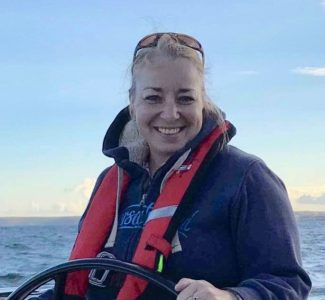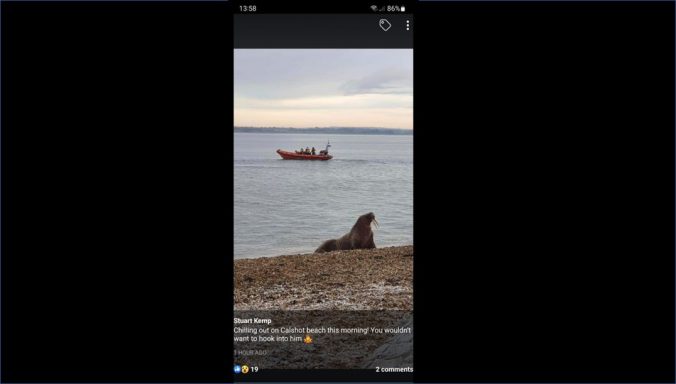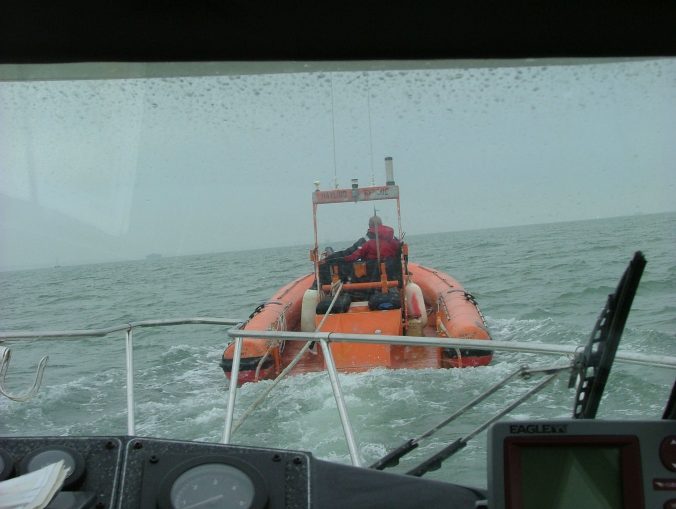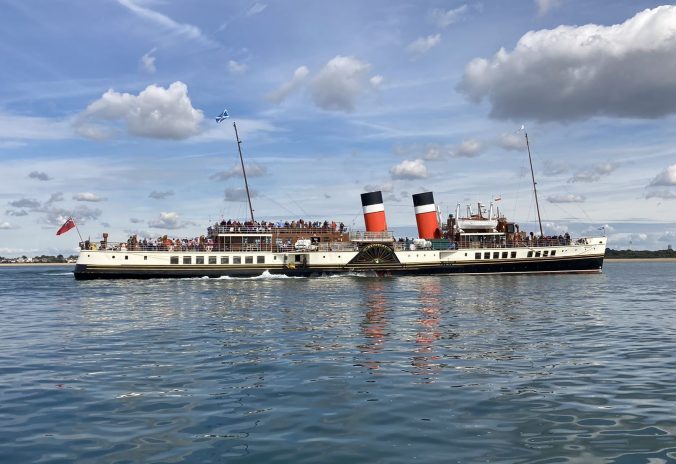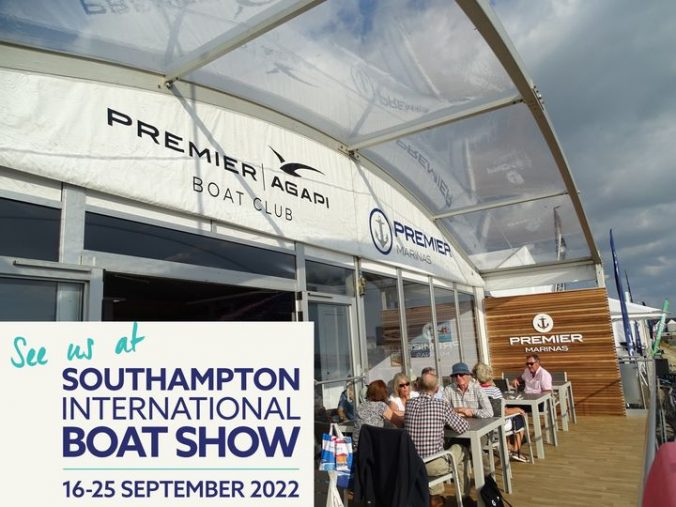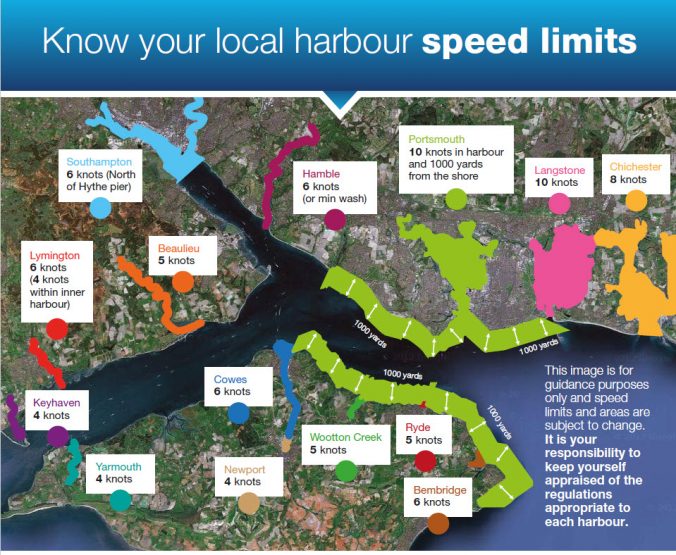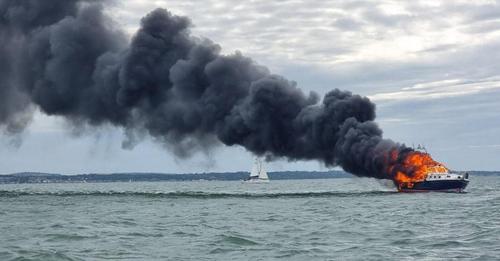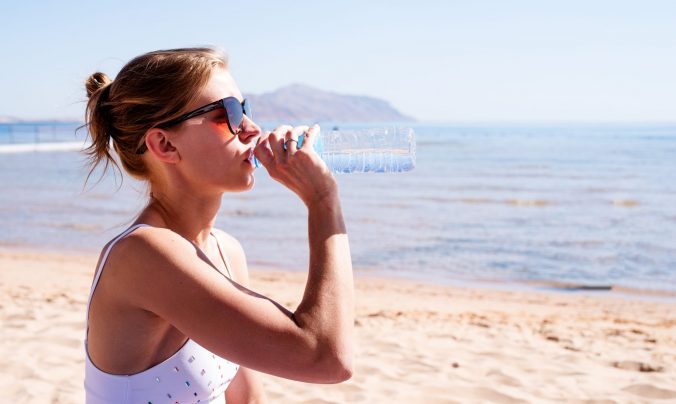It’s not every day you see large marine mammals, and a walrus is an extremely unusual visitor. Apparently this young male has been exploring the UK South Coast and the French coast, and on Sunday 11th December he decided to stop for a nap at Calshot. Social media spread the word faster than any news bulletin. Here is an extract from one of the Hampshire & Isle of Wight News channel report videos.
Category: Article (Page 2 of 10)
Last month, one of our club members had a scary experience at sea: battery failure and a cascade of related problems which meant he was stranded alone, with dusk approaching. Chatting about this at the SMAC meeting later, we agreed that we had all had scary learning experiences over the years (heading picture: me being towed, 2008!) and decided that it would be worth an article to help people avoid getting into trouble. With colder weather, shorter days and fewer people out on the water in the winter season, this is even more important.
Every boat is different and we all have different levels of experience so I’m not going to give a list of safety equipment. Instead, I’m going to put down some key “What-If” questions that will help you create your own list of actions and equipment that will help you stay out or get out of trouble.
Taking a lesson from the Disaster Planning guys, there’s no point creating detailed scenarios to plan for because sure as eggs something will happen that isn’t on the plan. Instead, they plan for what they call “denial of service” which means regardless of the cause, how would you deal with the situation.
Modern engines are complex beasts and a breakdown at sea often isn’t something that can easily be fixed. However many problems aren’t caused by actual breakdown. The more common problems are failing to start due to battery problems; propellers snagging ropes and gear and relatively minor problems becoming a far worse situation because of an inability to summon help. Let’s deal with those in this article.
Before you set off
Before we get to the scenario planning, there are two vital safety considerations for anyone taking a boat to sea. Firstly, make sure your engine and main equipment is properly serviced by a professional to make sure it is in the best possible condition. It’s tempting to save a few pounds by doing your own servicing but a good marine engineer will spot potential problems long before they happen and that comes from years of experience, something most of us don’t have. The second is to do basic checks before starting the engine, similar to pre-flights checks that pilots carry out before taking off. These only take a few minutes but can prevent problems developing at sea. The basic checks on an inboard-powered boat that I would always carry out are as follows:
- Battery voltage: see the chart below. This needs to be measured at rest, before you start charging or putting load on the battery. Exact numbers will vary by type and make of battery and temperature, but this is a good guide. You need an accurate voltmeter for this, because you will see that a half-discharged battery still reads 12 volts!
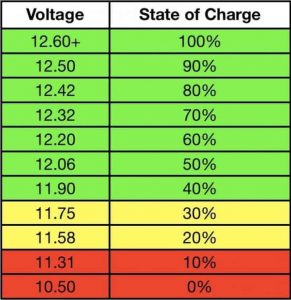
- Do a visual check on the engine and engine bay, to look for oil or water leakages. Recirculating coolant water is usually pink and so is power steering fluid so any pink in the bilge means trouble.
- Check belts for tension and wear. If they break or slip off you will lose battery charging, power steering and the cooling water pump. Make sure they are in good condition and tensioned up to specification. A rough check is not bar-tight and not flexing more than about a centimetre in either direction.
- Check recirculating cooling water level by a visual check under the water cap.
- Check oil levels in gearbox, sump and power steering if practical.
- Check that the fuel guage shows sufficient for your planned trip. Keep a log of journeys so you know roughly how much fuel is likely to have been used since the last fill-up. Fuel gauges and senders have been known to get it wrong!
- Check the operation of your fixed VHF radio, hand-held back-up radio and navigation equipment particularly plotter and lights.
- Plug your mobile phone into a charging port to make sure you have a functioning phone as a means of calling for help and basic navigation if needed.
If all is OK, start the engine and let it run and warm up for several minutes before you set off. Do another visual check of the engine bay and look for anything amiss such as the presence of steam, water or oil from the engine. Check gauges for normal operation – oil pressure, oil and water temperature and battery charging. If anything is abnormal, don’t leave the berth.
If you ever go to your boat and find the batteries are discharged, don’t be tempted to jump-start and go anyway, assuming the alternator will charge the batteries while you are travelling. The discharged battery may be the result of leaving a load on by mistake, such as a light or instrument. But it could also be the result of a failed battery or an alternator problem coming back from a previous trip. You could end up far from home, with a battery that didn’t top up on the journey.
Most people will have multiple batteries so the starter battery isn’t compromised by load on the other (domestic) systems. Traditionally you would have had a starter battery for the engine with high cold cranking amperage (CCA) and a deep cycle battery for the domestic system which is intended to be charged and discharged over time. I recommend fitting dual-purpose batteries for both starter and domestic batteries which have enough grunt (CCA) to start an engine and can also stand up to a long slow deep discharge. This means you can use your emergency crossover switch to jump start your starter battery from the domestic battery. Don’t be tempted to leave the switch open, because if you do the “bad” battery will draw down from the “good” battery and you will end up with two flat batteries not one.
When you leave the berth, keep regularly glancing at lights and gauges and listen for warning buzzers. It’s easy to be distracted by the anticipation of fishing or chatting with mates and not notice warning lights, readings and noises.
What could possibly go wrong?
This isn’t just a humorous caption, it is also a valid question that we need to run through our minds so that we aren’t caught unprepared. We can’t plan for everything of course, and the advice above will prevent a lot of engine problems from happening at sea. However, the two common causes of call-outs, battery problems and rope tangles can be anticipated and planned for. In addition, we also need to plan for these and other situations that escalate to needing to call for outside help.
Flat Battery.
In other words, you turn the starter key and there are unhappy noises from the starter, or perhaps nothing at all. There are in fact two possible causes for this: you may indeed have a flat starter battery, in which case the emergency crossover switch will help you out. I always carry a heavy duty jump starter pack in my bag which has enough power to start a big diesel engine and also has a USB power outlet to charge a phone, so if you had a fault that managed to drain both batteries you still have a third option. The other possible cause is a poor connection somewhere along the high amperage circuit (the thick cables). This creates enough resistance to give a very good impression of a flat battery, and if the battery voltage is looking good it’s worth checking the connections at the battery, switch and starter motor to make sure there isn’t corrosion on the contacts or damage to the wire next to the terminal. A quick loosen, rub with abrasive and a re-tighten will get you back in business if this is the problem.
Rope tangle.
In our crowded waters, there’s a lot of floating boat and fishing debris which can potentially jam propellors and steering gear. Sometimes they can be just below the surface such as pot ropes in a strong tide. Always treat floating objects, however small, as potential tangles so steer round them rather than over them. Unfortunately, we don’t spot them all and sometimes they are self-inflicted when our own mooring lines or anchor rope gets in the way of a propeller. On an outboard or outdrive -powered boat it is usually possible to reach the propeller somehow but the rope may be very tightly wound and will have to be cut free. You will need a suitable knife and a harness to prevent you from going over the side when you reach for the prop. That would make a bad day a lot worse.
Another tip is to carry a long-handled rope cutter. My boathook is one of those models that has an exchangeable end, so you can swap a hook, brush, net etc. I bought the cheapest end you could buy (a hook I think), discarded the hook and bolted the blade of a serrated stainless steel kitchen knife to the interchangeable part. This means that in an emergency I can remove the hook from the boathook, plug in the knife and attack the rope tangle from a safe distance.
On an inboard boat the propeller is often well out of reach under the stern and the only chance of resolving the problem is to get in the water and dive under. Only ever consider doing this if you are a good swimmer, fit, in calm water and have someone else on board. Otherwise, call for help.
Calling for help
Once you have decided that help is needed, firstly assess if you are in a safe place. If you are likely to drift into danger, put the anchor down if that is the safer option. Make a note of your Lat Long position from your chartplotter so you can direct people to your aid. You now have a number of alternatives, depending on the situation.
- If a simple tow is needed, you can radio, phone or WhatsApp club members and if someone is nearby they will come to help.
- If you have a larger boat or you are unable to summon local help, then call Sea Start. Membership is highly recommended, and they operate like the AA for the sea within their defined area of contract. A phone call is a better option for them than VHF because you can guarantee a response.
- If neither of those options are viable then call the Coastguard who will then alert the appropriate rescue service. This could be the RNLI, GAFIRS or other private rescue services that operate out of Langstone and Chichester. Use VHF if possible so they can pinpoint the location of the message broadcast. If your VHF isn’t functioning then use your phone to call 999, asking for Coastguard.
If you are in a shipping lane, alert the Coastguard to your situation so they can warn shipping of your presence and you can also tell them if you are waiting for a tow or Sea Start. Keep them informed of progress and keep monitoring Channel 16 in case someone is trying to contact you. If daylight is fading, switch on your single white anchor light. If you have a radar reflector, deploy that too.
Being stuck at sea is a scary experience but with sufficient planning it will feel much less dramatic. The human brain has a part called the amygdala which is triggered by extreme circumstances and leads to the thinking part of your brain being temporarily disabled, causing you to forget obvious things or make illogical decisions. If you have a series of back-up plans there is less likelihood that you will panic and your amygdala will continue to mind its own business.
Final thoughts
In summary, here are the key things to fit, take and do to keep safe at sea.
- Look after your boat
- Do your pre-trip checks on the batteries and engine, every trip
- Don’t take chances with batteries, fuel or warning indicators
- Have a dual battery system installed
- Have a hand-held VHF as a back-up, and keep it charged
- Take a battery jump pack with you
- Fit a 12v USB power port in the boat and use it to keep your phone charged (remember the charging cable!)
- Have a strong, serrated rope-cutting knife on board
- Have a torch on board, with spare batteries
Stay safe, and have fun. A few years ago the RNLI made a DVD called “Serious Fun” with a section for each aspect of recreational boating. It contains some useful tips and advice from the RNLI. If you can get hold of a copy, you might recognise someone in the Boat Angling chapter!
Neville Merritt
I know this is meant to be an angling website, but you can’t be on a boat in the Solent area without sooner or later seeing an unusual vessel with historical connections. We often see square rigged sailing vessels, preserved MTBs and air-sea rescue launches and this year we also saw the Waverley. The picture above was taken as she passed me while I was fishing the autumn cod marks off Gilkicker. This is the last operational paddle steamer in the world, and sho goes on a national tour every year providing trips and hosting corporate events. If you want to find out more about any of the historic vessels you see, check out the National Historic Ships database. Even small privately owned vessels are listed, and some of the stories behind the boats are fascinating. More details on the Waverley are here
I have been to the Southampton Boat Show more times than I can remember over the years, and watched its fortunes wax and wane. I’m pleased that this year it seems to have picked up its vibrancy, although I was sorry there were so few of the small and interesting stalls that used to be in the chandlery tent. There were plenty of boats to look at, and most of them are in the water unlike in earlier years. As a Premier berth holder I took up their offer of a coffee on their stand where I discovered they also had magnificent view over the marina display! There are plenty of reviews circulating in the media so I’m just going to highlight three exhibits that caught my eye and may be of interest to boat anglers.
Tope Hunter Boats
This was new to me, and an interesting alternative to the cuddy clones that dominate the small angling boat choices. The Tope Hunter is 18 feet long and almost open, reminding me of the Shetland Sheltie concept. Built by Steve Paice locally in Sussex, this promises to be a very handy layout for anglers with a good turn of speed from a relatively small engine. Steve formerly built Raider boats so he has a good understanding of the requirements for this market. A cuddy version is on the drawing board which I think will be very popular. Unfortunately the show boat was almost hidden by access steps so I have borrowed a picture from the website. Standard boat ex engine is £18,000.00 including VAT.
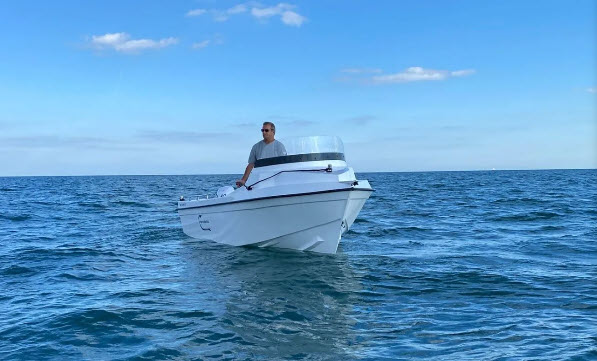
SHOXS Seats
The next stand to catch my eye was Allsalt Maritime which featured some very impressive high-tech boat seats and suspension pedestals. These are available for military, commercial and recreational use and it’s always a good sign of design and durability if the professionals also buy the product. Models are available for RIBs, helm and crew seats of varying configurations. You can also buy suspension pedestals for existing seats and I’m quite tempted by the low profile pedestal mount for my KAB helm seat.
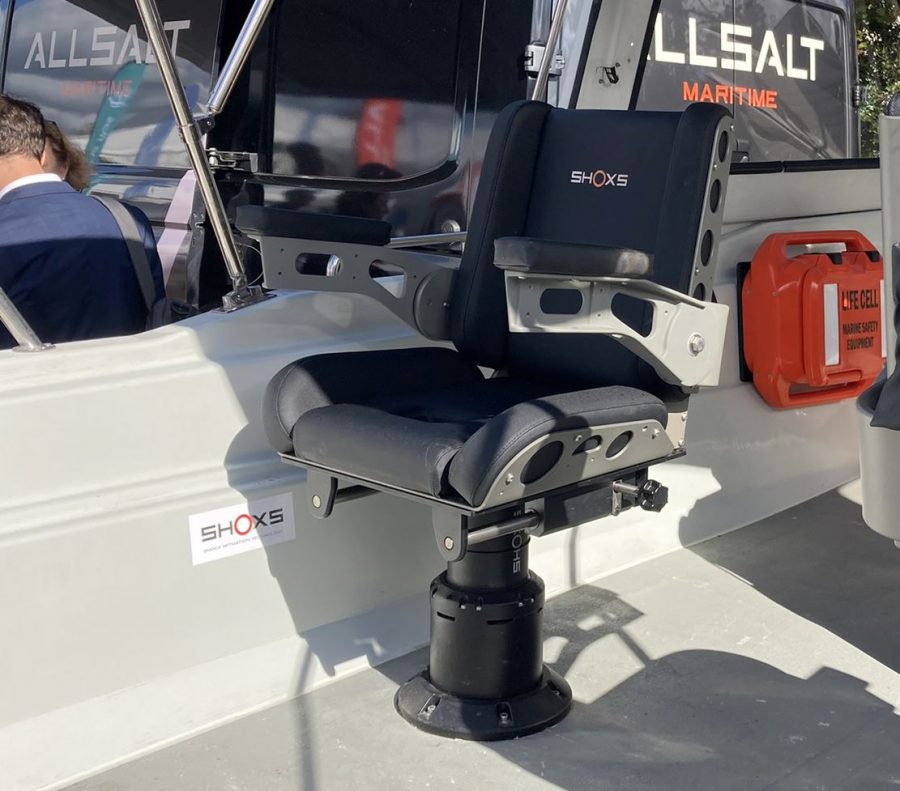
Happy Hull
Finally, on the water I came across something different. I have often wondered why nobody manufactured a floating bag that you could wrap around your hull in a marina berth to prevent weed growth. Well, these guys now have and it’s a fraction of the cost and a lot more convenient than those giant Lego blocks you have to drive a boat onto. The current Happy Hull models are best suited to outboard power where the leg can be fully lifted from the water but I was assured that a model suitable for outdrives is under development. I use a lot more fuel as the season progresses and the hull gets more fouled, and this system effectively prevents that from happening. Customers include the RNLI and I think there is a lot of potential for this product.
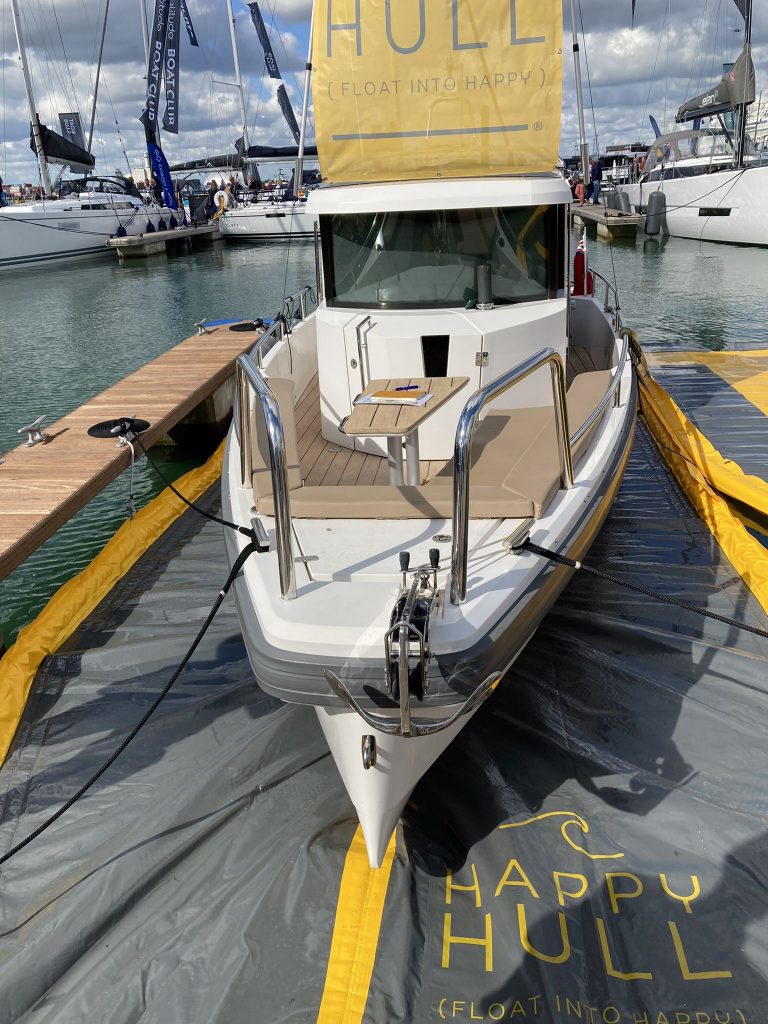
Obviously there were hundreds more stands and many interesting products to see. As a boat angler, I thought these three were worth a mention but that doesn’t mean there weren’t others of interest too. The SBS is still a good day out, perhaps not every year but certainly worth a catch-up on product innovations from time to time.
Neville Merritt
September 2022
Queen’s Harbour Master Portsmouth LNTM No 100/22
1. NOTICE IS HEREBY GIVEN by the Queen’s Harbour Master Portsmouth that to mark the sad passing of Her Majesty Queen Elizabeth II a 96-gun salute will take place on Friday 9 September 2022 commencing at 1300.
2. The salute will be fired from the Saluting Station on the southern point of South Railway Jetty and blank rounds will be fired at one-minute intervals, with the final round at approximately 1435.
3. The harbour will remain open during the salute and mariners are requested to keep well clear of the Saluting Station.
4. Cancel this LNTM 10 September 2022
Sunset and evening star,
And one clear call for me!
And may there be no moaning of the bar,
When I put out to sea,
But such a tide as moving seems asleep,
Too full for sound and foam,
When that which drew from out the boundless deep
Turns again home.
Twilight and evening bell,
And after that the dark!
And may there be no sadness of farewell,
When I embark;
For tho’ from out our bourne of Time and Place
The flood may bear me far,
I hope to see my Pilot face to face
When I have crost the bar.
Alfred, Lord Tennyson
On Friday 2nd September, a service of remembrance and dedication was held at the grave of the only crew member to be buried in the UK. Ibrahim Hussain, aged 19 was one of only five of the crew whose bodies were found following the wreck of MV Flag Theofano on 29th January 1990, only a few miles from Portsmouth Harbour. The other 14 bodies were never recovered and are assumed to be inside the wreck still.
Thanks to the campaigning of Martin Woodward, author of “The Forgotten Shipwreck” and Steve Hunt who did a lot of the organising, with the help of Portsmouth City Council and others a memorial headstone has been installed over the grave of Ibrahim Hussain. This was unveiled at a service held at the graveside in the Muslim section of Kingston Cemetery, Portsmouth. Those attending included many who had been involved in ship movements in the area at the time of the disaster, representatives from the pilots, harbour authorities and others who wanted those who had lost their lives to be remembered and not “forgotten”.
The Deputy Lord Mayor Councillor Tom Coles introduced the service before Sheikh Fazle Abbas Datoo led the service through words and prayers in Arabic and English. After a short address from Martin Woodward, the headstone was unveiled and the assembled congregation stood for a minute’s silence. Wreaths were laid by the Deputy Lord Mayor, Martin Woodward and Roger Thornton on behalf of the Southampton Shipowners Association, Port Agents, Merchant Navy, Welfare Board and Sailors Society Southampton.
If you want to know more about the story of the wreck and subsequent investigation, I recommend Martin Woodward’s book (see link at the bottom of this page to purchase a copy). Martin was one of the RNLI crew serving on the night of the wreck, and as a commercial diver assisted in the investigation. For many years, the cause of the wreck was a mystery, but this book finally provides a public account of what probably happened.
However, as one mystery is solved, others remain. It seems almost inconceivable that the damaged Dean Tail buoy which would have provided vital evidence was quickly removed and has never been seen since. Although it was possible to attempt to recover the remaining bodies from the wreck, permission was never provided. The Greek shipowners have not cooperated even 30 years later with requests for information about the ship such as internal plans which could have helped with the investigation. Was there something to hide or is this simply avoiding any potential blame? The mysteries remain. The largest peacetime disaster in the Solent area since WW2 has been forgotten or ignored by many, but hopefully this headstone will be the first of more memorials to be placed in remembrance of those who lost their lives.
You can watch a BBC South recording here featuring interviews with Martin Woodward and Steve Hunt:
The written report from BBC South Today is here
You can purchase a copy of Martin Woodward’s book here:
Author Martin Woodward MBE is probably the most qualified person in the entire world to write this particular book. Not only was he on the crew of the Bembridge lifeboat on the fateful night of the Flag Theofano sinking, he was also the professional diver called in subsequently to investigate the wreck. He has taken a lifelong interest in the circumstances surrounding the wreck and in honouring all those who perished. He lives in Bembridge, Isle of Wight on the seafront and he can see the wreck site every day.
This short book is a fascinating account of what most probably happened that night and resolves much of the uncertainty surrounding the cause of the sinking. Of course, we will never know for certain, but Martin’s assessment is highly plausible and dispels many of the myths surrounding the sinking.
I won’t spoil the story by revealing the ending, but it is worrying that there is a hint of a cover-up immediately following the sinking. This is strange because the missing evidence would not have implicated any party at the time and could have given some closure to the families of those lost.
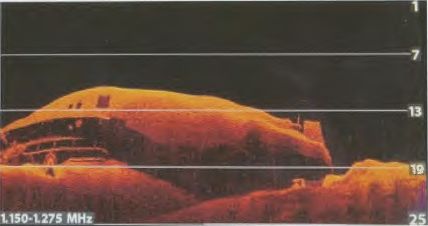
The book contains many photographs, incredibly detailed sonar images from as recent as 2022, and excellent sketches drawn by the author to illustrate his findings and theories.
If you are local to Portsmouth, the headstone for Ibrahim Hussain (the last of the five crew members to be found) will be unveiled at 10:00 on the 2nd September. Ibrahim’s grave is at Kingston Cemetery and he is the only crew member to be buried in the UK. The grave has been unmarked for over 30 years, but now thanks to the interest created by Martin’s campaigning there will be a headstone on the grave. The unveiling will be followed by a book launch at Southsea castle.
For the price it is well worth a read and gives a lot more meaning to those two cardinal buoys and the lump on the fishfinder.
You can buy a copy here:
Hampshire Constabulary Marine Unit have produced a useful leaflet sumarising all the speed limits in the harbours and rivers around the Solent. This is helpful because they differ, and signage is often small or obscured. You can download a copy of the leaflet here.
COLREGS Rule 6 – Safe Speed
Every vessel shall at all times proceed at a safe speed so that she can take proper and effective action to avoid collision and be stopped within the distance appropriate to the prevailing circumstances and conditions.
The following factors should be among those taken into account:
- The state of visibility
- The traffic density including concentrations of fishing vessels or any other vessels
- The manoeuvrability of the vessel with special reference to stopping distance and turning ability in the prevailing conditions
- The state of wind, sea and current, and the proximity of navigational hazards
- At night the presence of background light such as from shore lights or other back scatter
- In instances where radar is being used, the limitations associated with your radar device and general radar navigation must be considered
Bembridge All-Weather Lifeboat the RNLB Peter and Lesley-Jane Nicholson responded to a motor boat on fire off the eastern shore of the Isle of Wight on Sunday 19th June. The Tamar class lifeboat was launched at 3.40pm at the request of UK (Solent) Coastguard to assist the 38ft vessel Fast Flow on fire with two people onboard. First on scene was Gosport & Fareham Inshore Rescue Service (GAFIRS). The Independent lifeboat crew were able to take the two crew off safely and establish a tow. Once on scene, RNLB Peter and Lesley-Jane Nicholson took over the tow and anchored the burning vessel.
The two crew were then transferred to her and taken to Hayling Island (from where they had set off earlier in the day) and dropped off. The Queen’s Harbour Master Portsmouth dispatched the firefighting tug SD Independent to attempt to put out the fire. Unfortunately by the time it arrived, the vessel had burned almost to the waterline and was beyond saving. It has subsequently been reported that the vessel has sunk. RNLB Peter and Lesley-Jane Nicholson returned to Bembridge as was recovered by 7.15pm.
Report and photos from Portsmouth Echo, RNLI and GAFIRS
Dehydration happens when your body loses more fluids than you take in and results in your body lacking the water and fluids to carry out its normal functions. If dehydration isn’t treated, it can get worse and become a serious problem.
Babies, children and elderly people are more at risk of dehydration and some medical conditions and medications can also increase the risk. Most of us will have experienced mild symptoms of dehydration occasionally, you know, those times when you’re too busy to eat and drink, when you might purposely reduce fluid intake because you can’t get to or use a toilet easily, or when we’ve been ill.
The main symptoms of dehydration are:
- Feeling thirsty.
- Dark yellow and strong-smelling pee.
- Feeling dizzy or lightheaded.
- Feeling tired.
- A dry mouth, lips and eyes.
- Peeing little, and fewer than 4 times a day.
- But if the symptoms develop to include any of the following, you or your patient need to seek urgent medical attention:
- Feeling unusually tired.
- Confused and disorientated.
- Any dizziness on standing that does not go away.
- Haven’t peed all day.
- Weak or rapid pulse.
- Fits (seizures).
As we mentioned earlier, the risk of dehydration can increase with certain medications and medical conditions.
- Diabetes
- Vomiting and/or diarrhoea.
- Being in the sun for too long (heatstroke).
- If you’ve been drinking alcohol.
- Sweating too much after exercise.
- If you have a temperature of 38C or more.
- If you take medicines that make you pee more (diuretics).
So what do you need to do if you think you have dehydration?
Well firstly, our advice is to avoid it in the first place. Prevention is definitely better than cure. Which can be easier said than done! But, if you’re exercising, working in a hot location or environment, you’re ill or you’ve been drinking alcohol, you need to up that fluid intake in anticipation. The NHS ‘Eatwell Guide’ (www.nhs.uk/live-well/eat-well/food-guidelines-and-food-labels/the-eatwell-guide/) suggests that we need to drink 6-8 cups of fluid per day. Water, low fat milk, and sugar free drinks (including tea and coffee) all count towards the total. But be wary of energy drinks, fruit juices and smoothies and fizzy drinks as they can be high in sugar and caffeine.
Water is the healthiest (and cheapest!) choice as a thirst quencher, it’s calorie free and there are no sugars to damage your teeth. Obviously you’ll need to check if tap water is drinkable locally and bottled water may be the better option in many locations. If you don’t like plain water, try sparkling or flavoured water, tea, fruit tea or coffee, or just add a slice of lemon or lime to hot or cold water. Adding a drop of sugar free squash or fruit juice also works.
If you think you are showing signs of dehydration:
- Drink plenty of fluid or increase your normal intake.
- If you’re dehydrated due to vomiting or feeling sick, take small sips and gradually increase. Even if you vomit again, some fluid will be retained.
- Drink enough to turn pee back to a pale, clear colour.
- Consider using rehydration sachets such as Dioralyte.
- If the dehydration is due to vomiting or diarrhoea, consult with your shoreside medical team as alongside rehydration salts, you should carry antiemetic (anti sickness) drugs as well as anti diarrhoea medication.
Dehydration can affect anyone onboard, so keep an eye out for other members of your crew and check you’re all taking on enough fluid regularly and remember that prevention is better than cure. If you’d like any further information about managing dehydration onboard, please get in touch.
If you would like a copy of our Hydration chart then click the button below for your free download.
[Button id=”2″]
